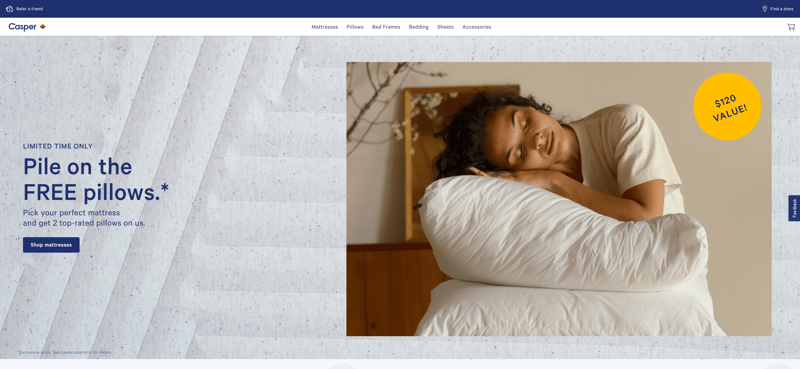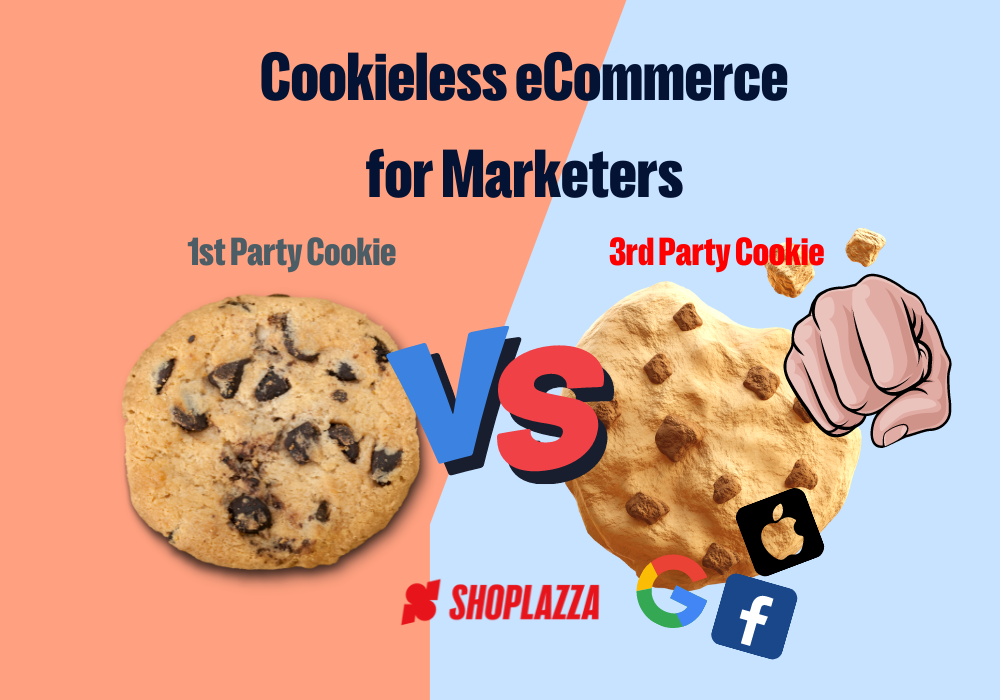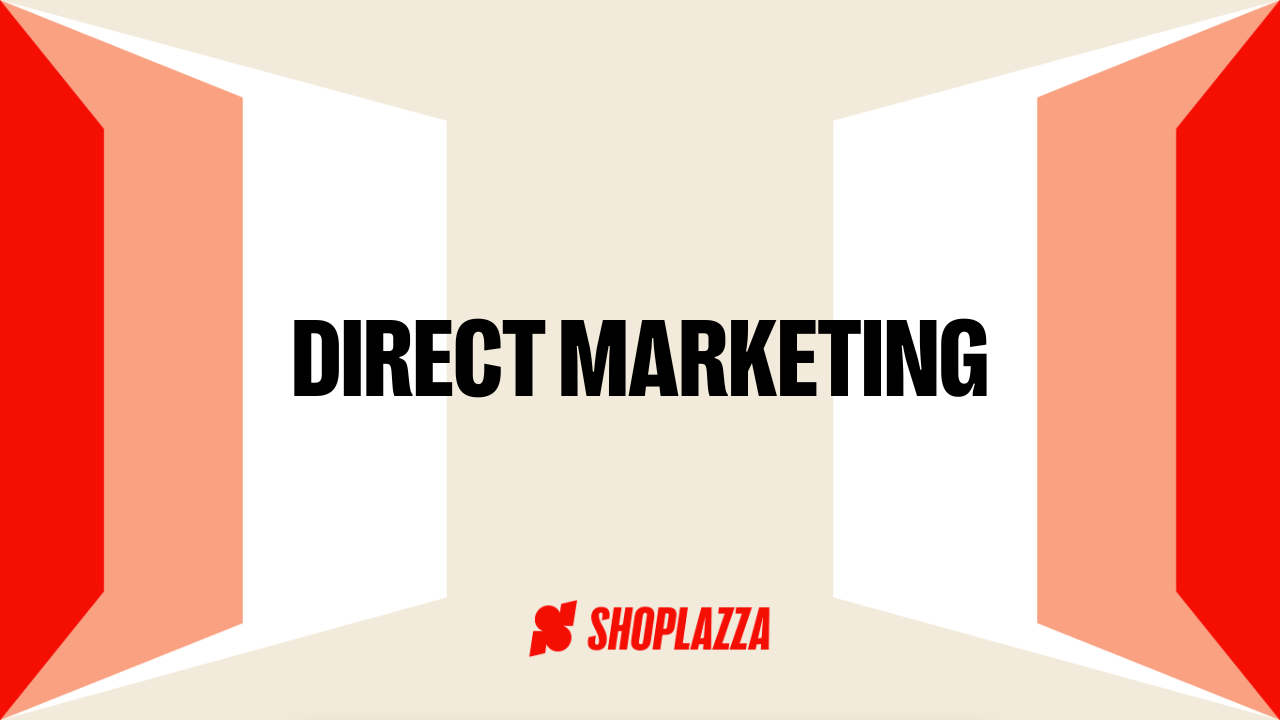
Hello, savvy shoppers and retail rebels – welcome to a world where the consumer holds the reins and convenience is king! 👋
Remember when shopping was all about squeezing into your Sunday best, wrestling through bustling crowds, and browsing through endless store shelves? Those days are shifting gears thanks to the rise of the direct-to-consumer (DTC) model. Today, we're journeying into the dynamic landscape of direct-to-consumer – a retail revolution that's ditching the middleman and delivering products directly from brands to your doorstep.
Think of direct-to-consumer as the shopping version of a farm-to-table experience. Who needs those pesky intermediaries inflating your bills when you can go straight to the source, receiving exactly what you want, fresh and directly delivered? Intriguing, isn't it? 🤔
So, strap in, dear reader, because we're about to navigate the twists and turns of the direct-to-consumer universe. From deciphering its meaning to unearthing its potent marketing strategies, from exploring buzzwords like customer data and online retailers to scrutinizing its business model and direct sales, we're leaving no stone unturned. And to make things even more enticing, we'll be showcasing some successful DTC brands that are truly shaking up the retail world.
So, if you've ever been curious about why direct-to-consumer is making such big waves, or how it's radically reshaping our shopping experiences, you're in the right place. Prepare for an enlightening ride! 🚀
Ready to start your ecommerce career with Shoplazza?
What is direct to consumer?
Alright, let's demystify DTC. Direct-to-consumer, or DTC for short, is a term that's been popping up like a relentless game of whack-a-mole in the retail world. But what does it mean, really?
In simple terms, DTC is a retail revolution that's giving power back to brands. They're saying goodbye to the middlemen - be it traditional brick-and-mortar stores or wholesalers - and saying hello to online sales, directly connecting with you, the online shopper. The result? You get a smoother ride on the shopping highway, with fewer detours and pit stops.
Picture this: Instead of your new shoes going through a whirlwind tour of various warehouses and stores, they hop straight from the factory onto your feet. Whether it's a subscription service or a one-off purchase, DTC retail models let you shop at your pace and convenience. And the best part? Brands get to understand you better when they sell directly. So, prepare for a more personalized shopping experience!
But what about the prices, you ask? Well, by cutting out the middlemen, brands can offer competitive prices. So, it's not just a win for the brands, it's a win for your wallet too! 💸
Decoding DTC: What does it really mean for businesses?
You've got the basics of DTC down, but let's not stop there. It's time to put on our thinking caps and decode what DTC really means in the business world.
In the grand arena of commerce, DTC is no less than a game changer. It's like a plot twist in a thrilling movie that leaves everyone on the edge of their seats. With DTC, businesses aren't just changing their sales model or how they sell, but they're also redefining their relationship with online shoppers. Thanks to DTC, the online shopping experience becomes more personal and direct.
But wait, there's more. By bypassing traditional distribution partners, businesses can take control of their story and tell it their way, often through engaging social media channels. This not only allows a brand to form authentic connections with consumers but also to respond swiftly to their needs. So, to better understand the revolutionary impact of DTC, let's delve into its business model. Ready? Let's go! 🚀
The DTC model: deconstructing the traditional approach
Traditionally, business was like a complicated game of pass-the-parcel. A brand's product would be transferred from manufacturers to distributors, then to retailers, and finally, to you, the customer. This legacy model, while time-tested, can often feel like a long-distance marathon, slow and less responsive to the rapidly evolving shopping habits of consumers.
Enter the Direct-to-Consumer (DTC) model. Now, it's more like a 100-meter dash, with products sprinting directly from the manufacturers to the end consumer. It's efficient, agile, and sensitive to your changing needs and wants.
Let's go beyond the basics and dive deeper into the architecture of the DTC model:
1. Complete Control Over Brand Image:
DTC businesses, whether they are legacy brands or digitally native brands, maintain full control over how they're perceived in the market. They're not just selling products, they're providing services directly to consumers, effectively communicating their unique values and mission without any middleman's distortion.
2. Fast Feedback Loop:
DTC creates an immediate feedback channel for consumers. This allows a brand to adapt its offerings swiftly and effectively, keeping a step ahead of changing consumer preferences and trends.
3. Tailored Customer Experience:
DTC brands can gather valuable data about customer needs, preferences, and behaviors. This data goldmine can be used to craft highly personalized experiences, services, and products, helping to cultivate customer loyalty.
4. Economical Efficiency:
By removing the middlemen, brands avoid unnecessary markups and can potentially offer competitive pricing. Furthermore, the operational costs involved in managing relationships with distributors and retail partners are significantly reduced putting more money in your pocket.
5. Quick Market Entry:
The DTC model facilitates faster introductions of new products to the market. Brands don't have to jostle for shelf space or promotional efforts with third-party retailers, accelerating the time from product creation to consumer enjoyment.
In essence, the DTC model is revolutionizing the retail landscape, empowering different brands to take the reins and directly meet their customers' needs. It's a retail revelation that's reshaping commerce, making each transaction a direct connection.

Direct-to-consumer marketing: Creating connections that count
When we talk about the DTC model, we can't overlook the magic that is DTC marketing. It's a little bit like playing cupid, creating a direct line of love (okay, communication) between the direct-to-consumer brand and you, the consumer. But what's involved in direct-to-consumer sales and marketing? Let's break it down.
1. Personalized outreach:
DTC marketing is all about leveraging customer feedback and data to tailor marketing efforts. This means instead of one-size-fits-all advertising, a direct-to-consumer brand can create personalized messages that resonate with consumers and help build customer relationships.
2. Multi-Channel Strategy:
DTC marketing often leverages multiple digital channels to reach the consumer. Social media, email newsletters, content marketing, and influencer partnerships all play a role in the DTC marketer's playbook. They're like different routes to your doorstep, each offering unique ways to engage with customers.
3. Data-Driven Decision Making:
DTC marketing is guided by a strong marketing strategy that prioritizes data-driven decision-making. With direct access to feedback and data, marketers can analyze, iterate, and optimize their marketing strategies based on real-time feedback. It's like having a compass that always points toward customer satisfaction.
4. Community Building:
Building authentic connections is a key part of DTC marketing. Brands foster direct relationships with their loyal customers, turning them into loyal followers and advocates. The goal is not just to facilitate direct-to-consumer sales, but to create a strong community of fans.
5. Emphasis on Brand Storytelling:
Storytelling is at the heart of the marketing strategy for many direct-to-consumer brands. They share their values, their journey, and their purpose - all the things that make them unique. And in doing so, they create an emotional connection, enhancing customer relationships and developing a huge cult following.
In a nutshell, DTC marketing is about creating connections, understanding customer feedback, utilizing digital channels effectively, and serving the consumer better. Because in the world of direct-to-consumer brands, the customer is not just king, they're everything.

Key components of the dtc model
Harnessing data
Data is the DTC powerhouse. With direct access to end consumers, brands gather information for improved decision-making, enhanced customer relationships, and product optimization. But how is this data gathered and put to use?
- Data in DTC: Information serves as the cornerstone of a customer-centric dtc approach. By understanding customer behavior and preferences, brands tailor their offerings and marketing strategies, making them more agile in a dynamic market.
- Data collection and usage: Brands collect data from sources like website analytics, customer feedback, and online sales records. This insight informs product development, personalizes marketing, and elevates the customer experience. It's the transformation of data into insights and insights into action.
The role of online retail in dtc
The digital revolution created a world of opportunities for DTC businesses, with retailers at the forefront. But what role do these digital platforms play?
- Digital platforms and dtc: Online platforms allow brands to showcase their products to a global audience and interact directly with customers. They provide an avenue for storytelling, customer engagement, and brand identity building.
- Adapting to dtc: As more brands embrace DTC, online retailers offer better data analytics tools, customer engagement mechanisms, and seamless online payments. Some even merge traditional and DTC retailing elements, providing brands with added flexibility.
The power of direct selling
Direct selling lies at the heart of DTC, offering brands control over their destiny by forging relationships directly with consumers. But how can these interactions be maximized?
- Empowering dtc businesses: By eliminating middlemen, brands control the entire customer journey—from product awareness to after-sale service. This not only reduces costs but also enriches the shopping experience.
- Maximizing impact: Brands need to focus on superior customer experiences, leverage customer data for personalized offerings, and optimize digital platforms for easy transactions. They also must build authentic relationships with their customers, selling not just a product, but a whole customer experience.
- Retail partners & supply chains: To appeal to new customers, many DTC brands establish strategic partnerships with physical stores or collaborate with other brands. These partnerships can also help optimize supply chains and reach a wider target audience.
Examples of successful dtc brands
In the world of DTC, many brands have shined particularly bright, showcasing the potential and power of this innovative sales model. These brands have swapped wholesale brands' traditional reliance on large resellers and retail partners for more control over their own products and the customer experience. Here are a few noteworthy examples:

Warby Parker:
Warby Parker challenged the industry norm by offering affordable, stylish glasses directly to consumers online, bypassing the need for physical stores. Their home try-on program, where customers can order five frames to try at home for free, has revolutionized the eyewear shopping experience, ensuring every customer finds the perfect pair right from their product pages.

Casper:
This business-to-consumer mattress company simplified the process of buying a mattress by selling directly to customers online, thus removing the need for retail partners. They ship their high-quality mattresses in a compact box, transforming a typically daunting shopping experience into a simple, stress-free one.

Glossier:
Glossier built a powerful beauty brand mainly online, cleverly leveraging the power of social media and influencer marketing. By involving their customers in product development and harnessing user-generated content for marketing, Glossier not only boosts DTC sales but also cultivates deep brand loyalty.

Dollar Shave Club:
Dollar Shave Club disrupted the razor market with its subscription-based model, providing top-notch razors at a fraction of the cost of traditional brands. Their success lies in their capacity to build a community of dedicated customers while ensuring convenient, regular deliveries, a strategy that sets many brands apart.

Everlane:
In the fashion industry, Everlane has set itself apart with its radical transparency. They give customers a clear view of what their clothes are made of and how much they cost to produce. This honest sales approach has struck a chord with consumers, proving that transparency can be an excellent selling point.
These brands exemplify the DTC approach, each leveraging the power of direct sales, digital platforms, and customer data to disrupt their respective industries and create meaningful connections with their customers. They highlight the potential success of the DTC model, even as more and more brands are exploring this avenue.
Wrapping It Up
And there we have it! A whirlwind tour through the world of DTC. From breaking down the concept to discussing marketing strategies and exploring successful DTC brands, we've seen how this model is shaking up traditional business norms and paving the way for a more customer-centric future. 🚀
Remember, whether you're a long-established company or a fledgling startup, embracing DTC can provide more control over your brand narrative, foster stronger relationships with customers, and offer valuable insights into their preferences.
Thanks for joining us on this journey! We hope this guide has sparked some fresh ideas for your own ventures into the DTC universe. Here's to forging direct connections with your consumers and to creating a business that's as innovative and unique as your brand itself. 😊
Until next time, keep thinking outside the box and happy marketing! 🎉
Leverage what you're learning in your new online store!






